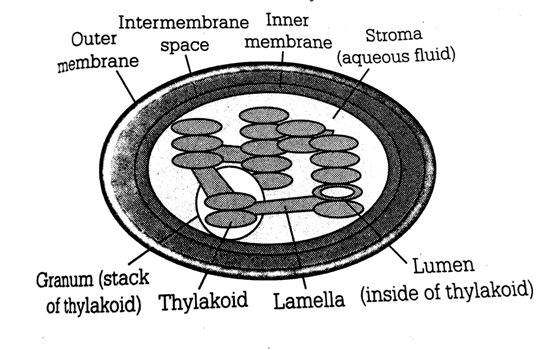 Multiple Choice Questions
Multiple Choice QuestionsCellular organelles with membranes are
nuclei, ribosomes and mitochondria
chromosomes, ribosomes and endoplasmic
endoplasmic reticulum, ribosomes and nuclei
endoplasmic reticulum, ribosomes and nuclei
Which one of the following does not differ in E.coli and Chlamydomonas?
Ribosomes
Chromosomal organisation
Cell wall
Cell wall
What is true about ribosomes?
The prokaryotic ribosomes are 80S, where S stands for sedimentation coefficient.
These are composed of ribonucleic acid and proteins
These are found only in eukaryotic cells
These are found only in eukaryotic cells
Select the correct statement from the following regarding cell membrane.
Na+ and K+ ions move across cell membrane by passive transport
Proteins make up 60 to 70% of the cell membrane
Lipids are arranged in a bilayer with polar heads towards the inner part
Lipids are arranged in a bilayer with polar heads towards the inner part
Which one of the following structures is an organelle within an organelle?
Ribosome
Peroxisome
ER
ER
Which one of the following cellular parts is correctly described?
Thylakoids - flattened membranous sacs forming the grana of chloroplasts
Centrioles - sites for active RNA synthesis
Ribosomes - those on chloroplasts are larger (80s) while those in the cytoplasm are smaller (70s)
Ribosomes - those on chloroplasts are larger (80s) while those in the cytoplasm are smaller (70s)
The structures that are formed by stacking of organized flattened membranous sacs in the chloroplasts are
cristate
grana
stroma lamellae
stroma lamellae
B.
grana
The structures that are formed by stacking of organised flattened membranous sacs (thylakoids) in the chloroplasts are grana. Chloroplasts are organelles found in plant cells that conduct photosynthesis. It is made up of three layers (membranes).
(i) Smooth outer membrane
(ii) Smooth inner (middle) membrane
(iii) Innermost membrane
It has thylakoid system, which is surrounded by the stroma and grana.
Stroma is a alkaline, aqueous fluid which is protein rich.
Grana is formed by stacking of organised flattened membranous sacs called thylakoid.
The chromosomes in which centromere is situated close to one end are
metacentric
acrocentric
telocentric
telocentric
